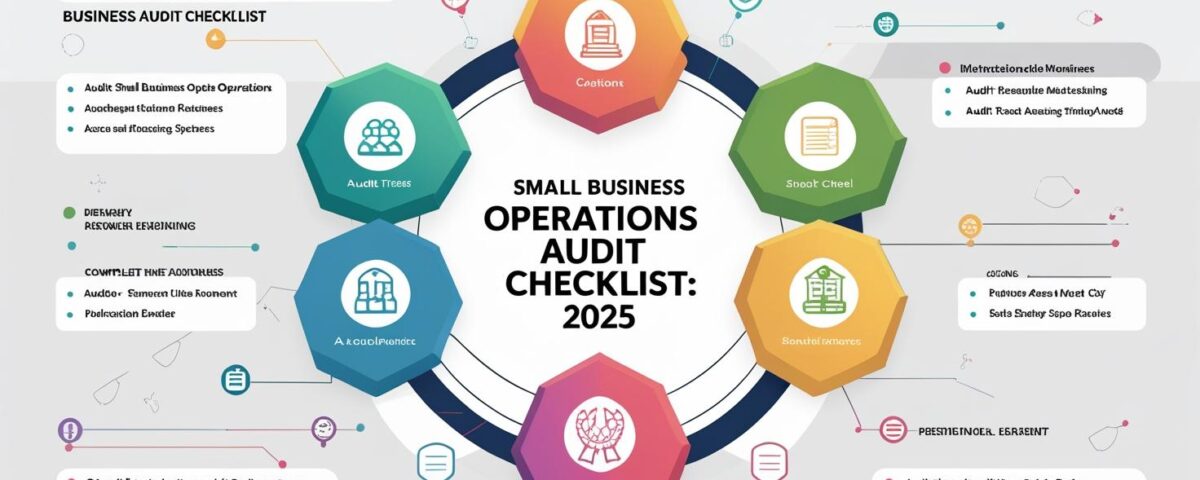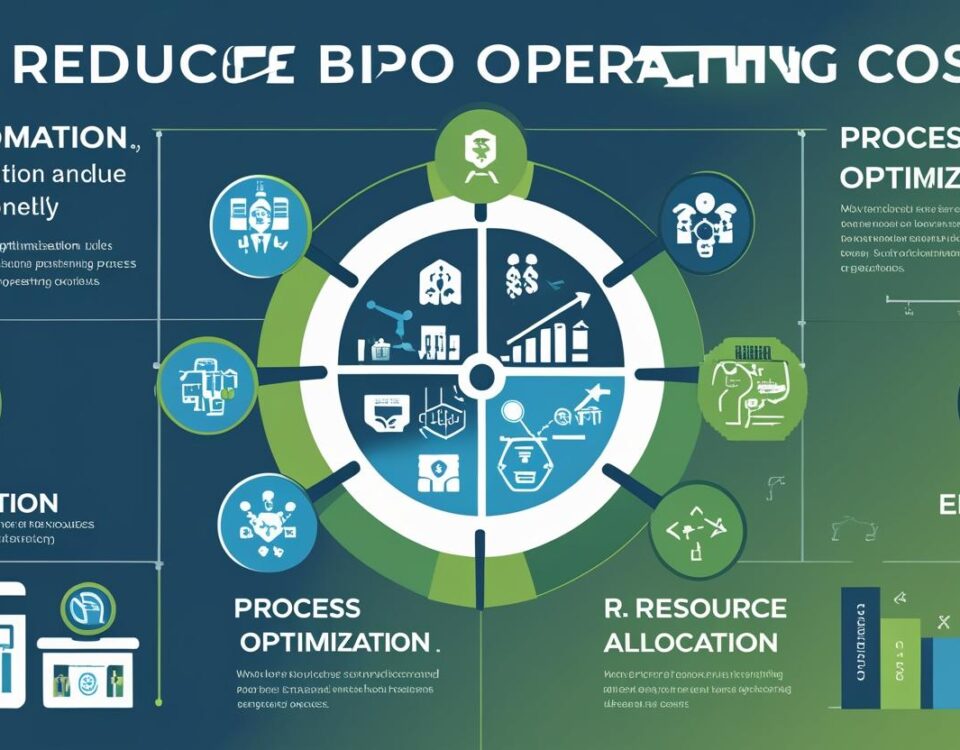Critical Small Business Operations Audit Checklist: Complete Guide 2025

Small Business Operations Audit Checklist
Small Business Operations Audit Checklist: Complete Guide 2025
Running a small business means wearing many hats, but one critical task often gets overlooked – conducting regular operations audits. A small business operations audit checklist helps you systematically review your processes, identify inefficiencies, and boost profitability.
This comprehensive guide provides you with a step-by-step checklist that you can use immediately to audit your business operations. Whether you’re a startup or an established small business, this audit will reveal hidden opportunities for improvement.
What is a Small Business Operations Audit?
A small business operations audit is a systematic review of your company’s processes, procedures, and performance. Unlike financial audits, operations audits focus on how efficiently your business runs day-to-day activities.
The main goals of an operations audit include:
- Identifying bottlenecks that slow down productivity
- Finding cost reduction opportunities
- Improving customer satisfaction through better processes
- Ensuring compliance with industry standards
- Maximizing resource utilization across all departments
Why Every Small Business Needs Regular Operations Audits
Small businesses face unique challenges that make operations audits essential:
Resource Constraints
With limited staff and budget, every inefficiency hurts your bottom line. An audit helps you make the most of what you have.
Rapid Growth Challenges
As your business grows, processes that worked for 5 employees might fail with 15. Regular audits ensure your operations scale properly.
Competitive Advantage
Efficient operations mean lower costs and faster delivery – two key advantages over larger, slower competitors. This aligns perfectly with proven business operations strategies for efficiency and growth.
The Complete Small Business Operations Audit Checklist
Phase 1: Preparation and Planning
Define audit scope and objectives
- List specific departments or processes to review
- Set clear goals (cost reduction, efficiency improvement, compliance)
- Assign audit team members and responsibilities
- Establish timeline for completion
Gather essential documents
- Current process documentation
- Organizational charts
- Financial statements from last 12 months
- Customer feedback and complaints
- Employee performance data
- Vendor contracts and agreements
Phase 2: Process Documentation and Analysis
Map current business processes
- Document how work actually flows (not just official procedures)
- Identify all touchpoints and handoffs
- Note decision points and approval requirements
- Track information and material flows
Time and measure key processes
- Record how long each step takes
- Count errors and rework instances
- Measure resource consumption (labor hours, materials)
- Document peak vs. off-peak performance variations
Phase 3: Financial Operations Review
Analyze cost structures
- Break down costs by department and activity
- Identify your highest expense categories
- Compare costs to industry benchmarks
- Look for unusual spending patterns
For detailed cost analysis and ROI calculations, consider using free online ROI calculator tools for small businesses to measure your improvement opportunities accurately.
Review revenue processes
- Audit your sales funnel from lead to payment
- Check invoice accuracy and timing
- Examine payment collection procedures
- Analyze customer acquisition costs
Phase 4: Human Resources and Productivity
Assess workforce utilization
- Calculate employee productivity metrics
- Identify underutilized skills and talents
- Review training and development needs
- Examine overtime patterns and causes
Review organizational structure
- Examine reporting relationships
- Identify duplicate roles or responsibilities
- Check for clear accountability at each level
- Assess decision-making speed and authority
Phase 5: Customer-Facing Operations
Audit customer service processes
- Measure response times to inquiries
- Track customer satisfaction scores
- Review complaint handling procedures
- Test all customer touchpoints personally
Evaluate delivery and fulfillment
- Time your order-to-delivery process
- Check accuracy of order fulfillment
- Review shipping costs and methods
- Assess inventory management procedures
Key Metrics to Track During Your Audit
Successful operations audits depend on data-driven decision making for operational excellence. Focus on these critical metrics:
Efficiency Metrics
- Processing time for key workflows
- Error rates in critical processes
- Resource utilization across departments
- Cycle time from order to delivery
Financial Performance Indicators
- Cost per unit produced or service delivered
- Revenue per employee and productivity trends
- Cash conversion cycle from sale to payment
- Operating expense ratios compared to revenue
Creating Your Action Plan
Prioritize Findings by Impact
List all identified issues and rank them by:
- Immediate financial impact – Issues costing money daily
- Customer experience impact – Problems affecting satisfaction
- Employee productivity impact – Inefficiencies slowing work
- Compliance and risk impact – Issues creating legal or safety risks
Set SMART Goals for Improvements
Make each improvement goal:
- Specific: Clearly defined outcomes
- Measurable: Quantifiable metrics
- Achievable: Realistic with current resources
- Relevant: Directly supports business objectives
- Time-bound: Clear deadlines for completion
Common Issues Found in Small Business Audits
Process-Related Problems
- Manual data entry consuming excessive time
- Unclear procedures leading to inconsistent results
- Multiple approval layers slowing decision-making
- Lack of standardization across similar processes
Technology Inefficiencies
- Duplicate software performing similar functions
- Poor system integration requiring manual data transfers
- Outdated technology limiting productivity growth
- Insufficient automation of repetitive tasks
Many of these issues can be addressed through strategic cost reduction approaches, similar to those used in proven BPO cost reduction strategies.
Implementing Audit Findings
Quick Wins (0-30 Days)
Start with improvements that require minimal investment:
- Eliminate unnecessary steps in workflows
- Reorganize workspaces for better efficiency
- Implement simple communication improvements
- Fix obvious technology issues or bottlenecks
Medium-Term Projects (1-6 Months)
Tackle improvements requiring moderate investment:
- Install new software or system integrations
- Redesign major workflows and procedures
- Provide staff training and skill development
- Renegotiate vendor contracts for better terms
Long-Term Initiatives (6-12 Months)
Address complex improvements requiring significant resources:
- Major technology upgrades or implementations
- Organizational restructuring or role changes
- Facility improvements or relocations
- Strategic partnerships or outsourcing arrangements
Making Operations Audits Part of Your Business Culture
Schedule Regular Review Cycles
Make audits routine rather than reactive:
- Monthly: Quick reviews of key performance indicators
- Quarterly: Focused audits of specific departments
- Semi-annually: Comprehensive operations reviews
- Annually: Strategic assessments and planning updates
Conclusion
A systematic small business operations audit checklist is one of the most valuable tools for business growth and efficiency. By regularly reviewing your processes, identifying inefficiencies, and implementing improvements, you create a competitive advantage that larger companies often struggle to match.
Remember, the goal isn’t perfection – it’s continuous improvement. Start with the most critical areas identified in your audit, implement changes systematically, and measure results consistently.
Use this checklist as your roadmap to operational excellence. Your bottom line, your employees, and your customers will all benefit from the systematic approach to business improvement that regular operations audits provide.
Ready to start your operations audit? Use this comprehensive checklist to begin transforming your business operations today. For additional insights on business process improvement, explore our resources on data-driven decision making and operational efficiency strategies.




